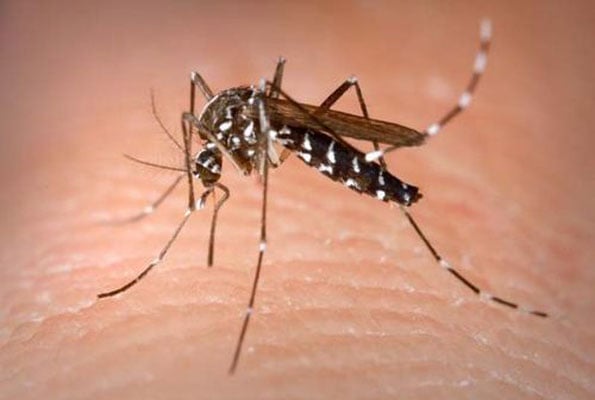Koboko on high alert over yellow fever

The female aedes mosquito which feeds on human blood is responsible for the yellow fever infection.
What you need to know:
- Dr Oloya said since Koboko borders endemic countries such as DRC and South Sudan, “we are always suspicious of something like that. So, the team decided to trigger an investigation”.
Medical personnel in Koboko District have been put on high alert following a suspected yellow fever case reported early last week, a senior medical doctor has confirmed.
The Koboko District Health Officer (DHO), Dr Denis Oloya, told this publication in a telephone interview yesterday that the surveillance team in the district had stepped up efforts with their counterparts from the World Health Organisation (WHO) to investigate the case in question.
“It is not an active case. It is a suspected case that was identified last week from one of the villages bordering the Democratic Republic of Congo (DRC) following unusual yellowing of the eyes,” Dr Oloya said.
Dr Oloya said since Koboko borders endemic countries such as DRC and South Sudan, “we are always suspicious of something like that. So, the team decided to trigger an investigation”.
Dr Yonas Tegegn, the WHO country representative, said the samples from the suspected yellow fever case have been taken to the Uganda Virus Research Institute (UVRI) in Entebbe for investigation.
“There is no confirmed yellow fever outbreak in Koboko District. What we have is still a suspected case. Samples were shipped to Uganda Virus Research Institute on June 7 and we are waiting for the results,” Dr Tegegn said in a statement issued yesterday.
“Meanwhile, tests for Ebola, Marburg, Crimean-Congo hemorrhagic fever and Rift Valley Fever are all negative,” Dr Tegegn confirmed.
Suspected case
Dr Oloya said in 2019, when a suspected case of yellow fever was reported, it was eventually confirmed positive. He, however, said that the district is confident that the bigger population is protected against the disease, following the mass yellow fever vaccination exercise done by the Ministry of Health and its partners.
Dr Fred Nsubuga, the national focal person for the vaccination campaign in the Ministry of Health said one shot of yellow fever vaccine is enough for a lifetime.
The most recent vaccination was conducted this year in Kampala, Greater Masaka, Ankole Teso and Karamoja sub-regions amid resistance from some members of the public. The ministry said by the end of April it had vaccinated 12.2 million of the 14 million people between the age of one and 60 years.
Dr Nsubuga noted that Uganda has in the past decade been hit by over 10 yellow fever outbreaks and it is important for Ugandans to get vaccinated and stay safe. He revealed that about 33 percent of the patients who contracted yellow fever in northern Uganda during the 2010- 2011 outbreak succumbed to the disease.
Dr Nsubuga also noted that the 2020 outbreak that hit the districts of Obongi, Moyo, and Maracha in West Nile, claimed about 60 percent of the patients.
“Outbreaks are common these days because they are nearly occurring every year. The risk assessment that was conducted in 2020 and categorised the regions into high risk and moderate,” he said.
Dr Oloya on the other hand encouraged the residents of Koboko who have not yet been vaccinated to go for free vaccination in public health facilities to check the deadly disease. He, however, said that those who were vaccinated should not go back for another shot.
Background
According to the World Health Organisation, yellow fever is a viral infection transmitted by infected mosquitoes, which can be deadly but easily prevented through vaccination.
The world health body says the disease has re-emerged as a public health threat in many parts of Africa and South America, due to several factors including climate change, rapid urbanisation, and increasing population movements.
Uganda is said to be among the 29 high-risk countries in Africa, according to the WHO. The yellow fever symptoms include fever, yellowing of the skin and eyes, (hence the name yellow fever), dark urine, abdominal pain with vomiting and bleeding can occur from the mouth, nose, eyes, or stomach. Uganda’s target is to eliminate yellow fever epidemics by the year, 2026.




